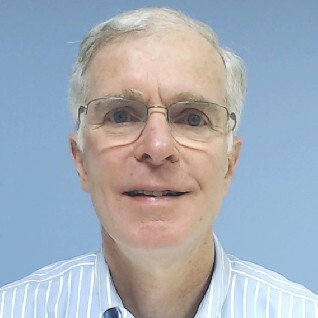
CQE PI Feature – Dr. Don Boroson
Featured in QSEC June newsletter 2025
Dr. Don Boroson, a Laboratory Fellow at Lincoln Laboratory, started his career nowhere near anything quantum. But over the last couple decades, he has spent more and more of his energy thinking about systems enabled by quantum techniques.
Don earned his PhD from Princeton University in Electrical Engineering, with a “paper and pencil” all-generic-applied-math-analysis thesis. He came to Lincoln right out of school and has worked here his whole (long) career. Every real topic he has ever worked on he learned on the job.
After a few years in the Comm Division at Lincoln, Don had learned and contributed much to the radio communications modulation and detection areas. As a short detour, he actually got to develop and build several pieces of specialized electronics and even devices, but soon found himself writing software for running automated Integration and Test (I&T) protocols on the complex comm satellite and terminal Lincoln was building.
HOWEVER, just at that time, Lincoln’s newly formed “Optical Communications Group” found themselves in need of someone with satellite I&T experience, and so overnight Don morphed into an optical comm systems engineer. This led over the years to his developing a deep understanding of optical comm transmitter and receiver techniques, as well as most of the other technologies and approaches used in free-space lasercom. In fact, in the late 1990s, Don was the lead engineer on the GeoLITE program, which became the world’s first telecom-rate space-based lasercom system.
Along the way, too, he happened upon some early work (from the 1970s) on potential optical receiver techniques that might actually use quantum processors based on a completely quantum mechanical description of the signal. This led to his spending many hours trying to understand the quantum world and searching for hybrid classical-quantum approaches for the design of improved receivers.
With that as motivation, in the early 2000s, he undertook to compile formulas and performance curves for essentially all the known optical modulation formats and receiver types, including the yet-to-be-built quantum ones, in order to compare them all on the same basis. In this exercise, he rediscovered “noiseless photon counting” for comm and, working with others in his group, realized that this was actually achievable both in implementation and in the 5-10-15 dB photon-efficiency improvement it could provide. That led to Lincoln’s (and JPL’s) NASA study on achieving much higher data rates back from Mars and the other planets, and subsequently, to NASA’s Mars Laser Comm Demo program, for which Don was Lead System Engineer until the project was cancelled due to governmental directives. As an outgrowth of that work, though, Don led the Lunar Laser Comm Demo program which, in 2013, successfully used SNSPDs (some of the world’s first thanks to intensive efforts both at MIT and at LL) to receive over 600 Mbps error-free on a link from the Moon to the Earth using a 0.5-Watt laser transmitter.
As his group got more and more familiar with the devices and architectures and performance of noiseless photon-counting, it also started to build up a more general quantum comm and processing expertise that Don was happy to play a role in. He continues to use his career’s worth of photonics and systems experience to help the team appreciate the amazing properties of quantum signals and processors but as viewed by a real-world system builder. This has included studies for several approaches to quantum comm and entanglement distribution, as well as quantum-enabled sensing such as Very Long Baseline Interferometry.




Copyright © 2022-2023 MIT Center for Quantum Engineering – all rights reserved – Accessibility


